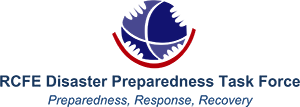SCENARIO
An ember from a campfire starts a small wildfire in a rural area of Southern California. The local fire department quickly responds and attempts to contain the fire using fire lines and a nearby creek. Unfortunately, the heavy rains during the previous winter followed by an unusually dry summer have left large areas of dry grass and timber that quickly spread the fire. Within hours, two small hospitals are in danger of being evacuated. And then you get the 911 reverse calls telling you that you have 20 minutes to evacuate your facility.

So what can you do?
With the Task Force
- Network of support with other providers, city and county services: transportation, durable medical equipment suppliers, community emergency response teams, fire departments and other emergency responders.
- Personal contact with Command Officer, Area Coordinators and other RCFEs in the area.
- You are not alone.
- Lunch & Learn events to increase your disaster preparedness knowledge.
- Emergency Data collected, maintained and available for local agencies and providers to assist with evacuation and relocation assistance, as needed.
- Relocation assistance into another care facility, allow continuity of quality care
Without the Task Force
- Little or no support from other providers.
- You meet the minimum licensing requirements for disaster preparedness; know very little what to do before, during and after a disaster.
- You relocate to the Hotel down the street listed as your relocation destination only to find out it had been evacuated as well.
- Your transportation needs have changed due to resident's higher level of care and have no way of safely transporting them.
- Your medication & hygiene supply is low and tried several times to contact supplier without success.
- You don’t have back-up power or it's running low on fuel.
